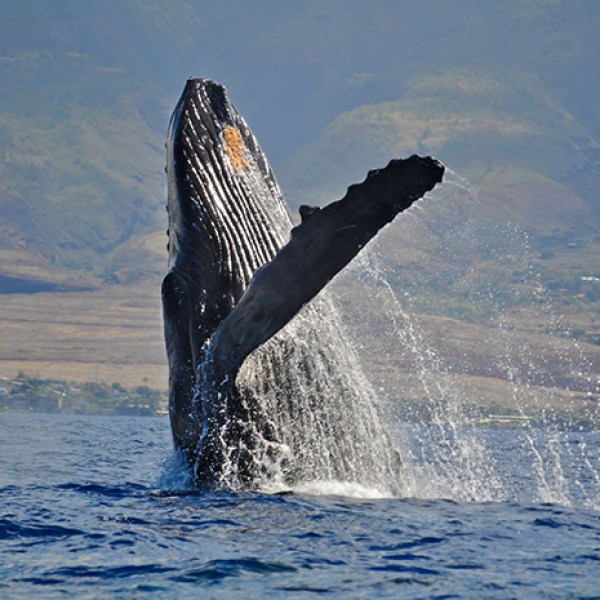Hawaiian humpback whales are massive marine mammals!
Every winter, approximately 2/3 of the North Pacific humpback whales embark on their 3,000 mile voyage to escape the frigid waters of Alaska. The journey to the warm waters of the central Pacific takes about two months. Once here, they give birth to their fragile young, who are sensitive to temperature. The mother feeds her calf from her reserves of blubber for months, depleting all her resources until the baby is big enough to swim back to Alaska. Humpbacks also mate in the romantic Hawaiian waters! By the end of whale season, each of the humpbacks are on their return journey to the nutrient-rich, frigid waters of the Pacific Northwest.
Although kohola can be seen frolicking and leaping off the shores of all the Hawaiian Islands, one of the best places for whale watching is the Auau Channel, between West Maui and the islands of Lana’i and Moloka’i. Kohola frequent Molokini, too, sometimes even entering the crater. When people travel by boat to snorkel the crater, everyone hopes to encounter humpback whales on the way.
Born in Hawai’i, curious calves are known to approach snorkelers and boats. As an endangered species, kohola are protected. As such, it is illegal for a person or boat to approach a whale within one hundred yards. However, sometimes the whales come to the divers or the boats, in which case the boat motor is turned off and the boat floats until the whales are finished greeting people and showing off. When the whales move a safe distance (over 100 yards) away, the boat can continue on its journey.
The Hawaiian Islands Humpback Whale National Marine Sanctuary (NMS) was founded in 1992 to protect the humpbacks from the islands’ shorelines to the 600 foot ocean depth. The State of Hawaii and the National Oceanic and Atmospheric Administration (NOAA) jointly manage the NMS. They hold educational outreach events, and they also organize and spearhead rescue and disentanglement efforts.
The size of kohola are astounding, and difficult to grasp until seen up close. Males range in length between 40 and 52 feet. They weigh up to 45 tons. Whales are considered to be one of the Hawaiian ‘aumakua – family guardian spirits – and are treated with great reverence and respect.
Whales depend on sound to communicate with one another, much more than animals on land, who can also rely much more on sight and smell. The songs produced by whales have been compared to the rhythmic sequences of music. Though there are many theories, researchers don’t know at this time why the humpback whales sing.


